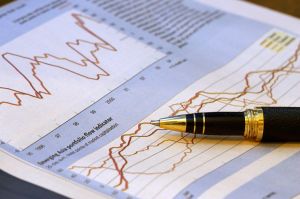
Forex trading strategies are plentiful, perhaps the exact reasons why a lot of people haven’t got a clue where to start. Nevertheless, all these strategies use two common characteristics and techniques: fundamental or technical analysis.
When you look at a fundamental analysis report, what you see is the whole financial scope including trades, historical analysis. These trends reveal international macroeconomics and influences that effect the supply and demand of currency trading. Here are five factors that influence it:
- What is the country’s financial situation? Would you consider it in the red zone? What financial policies do they have that may positively or negatively effect your Forex trading?
- Where is the country’s money stream? What can you predict from their import vs. export supply? Knowing this will make it easier to consider where it is appropriate to invest.
- What are the nation’s purchasing power (i.e. GDP).
- What are the country’s interest rates? If they’re too high, then that can’t be good.
- What are the country’s inflation levels? Are their prices generally high?
The last three points are variable, which means that they’ll need to be analyzed with other measurements from other countries to decide whether they reveal weaknesses or strengths–they cannot be considered stand-alone unfortunately. To acquire the full analysis, you’ll need to use comparable measures.
The individual using fundamental analysis will determine, with all these factors mentioned above, how they will affect a nation’s currency–will currency depreciate? It’s clear that the fundamental analyst cannot fully rely on this perspective since the Forex market trade is best analyzed in comparison to another–the analyst must compare two countries that have high potential in order to draw a compelling financial outlook to make a very irrefutable case of investment.
Meanwhile, the technical analyst only reviews charts. They analyze currency as pairs (as commodities like oil prices vs. stocks) and this information reveals how, over time, patterns emerge. The technical analyst thn uses this information to predict future trends.
This kind of analysis is flexible because it works the same with any market analysis strategy (Forex and stocks, for example). With some education, you can use this method across several types of markets and achieve good results.
However, fundamental analysis is very inflexible (it only looks at economic data for a single nation). The result is the lack of capacity to forecast another country’s market trends, for whatever happens in China has nothing to do with Canada. The fundamental analyst cannot take their analysis elsewhere, or to another market. These analysts study currency relative to its comparative values alongside at least two nation’s economies. Nevertheless, fundamental analysis is beneficial if you plan on forecasting long-range trends of a currency pair. It is also true that several lucrative trades happen once economic announcements are made–these wired traders jump on the opportunity whilst technical analysts are busy chart analysis.
Nevertheless, technical analysis provides you with specific stratagems for trading including entry and exit areas and where to put your slots. This method does not require as much time to learn as fundamental analysis and works on short spans rather and specific trades.
Successful traders use both these methods in order to conquer. Using a combination of specifically strategic trading analysis alongside economic forecasting will provide you with incredible results, a combination of unending wealth.